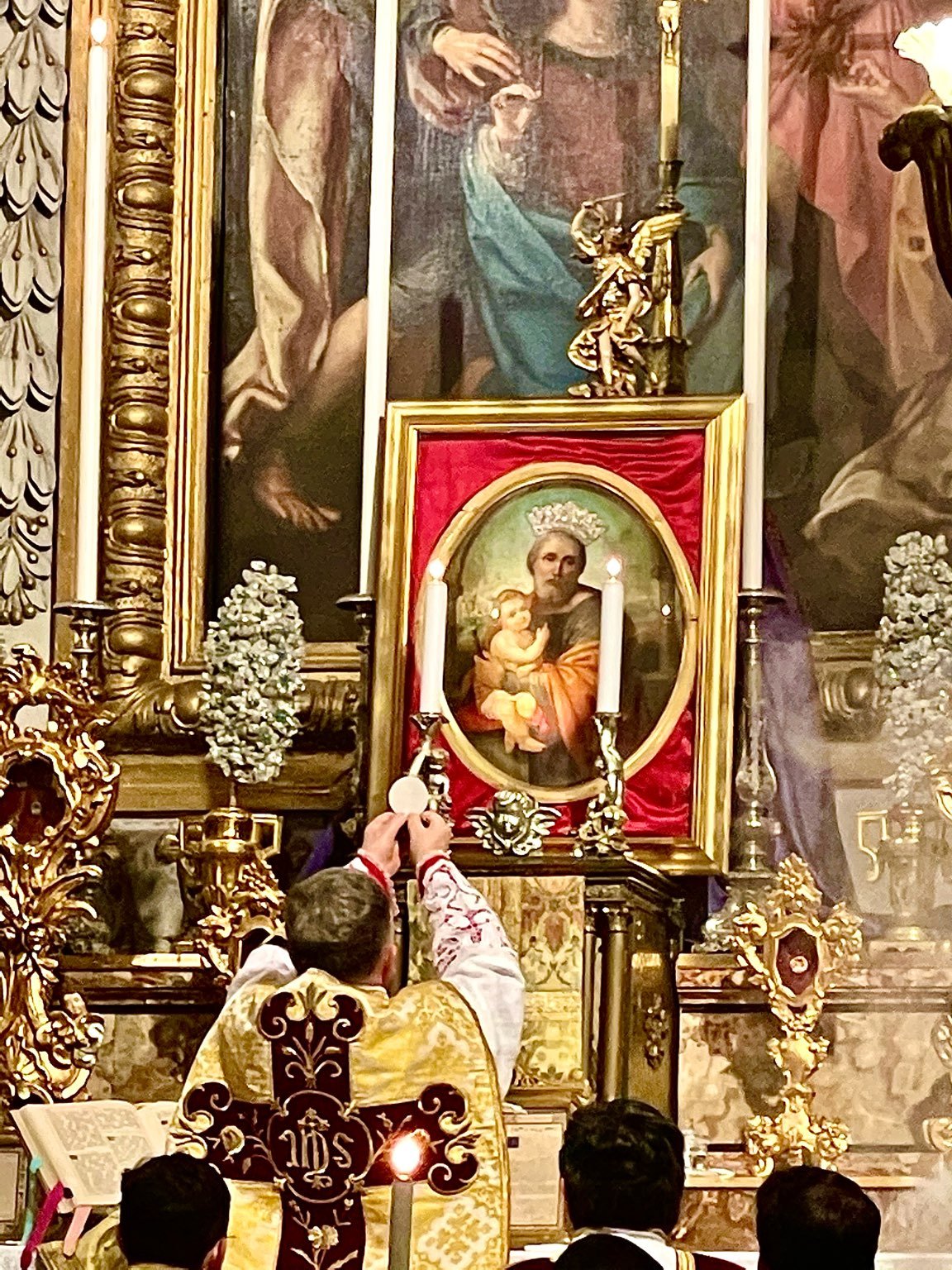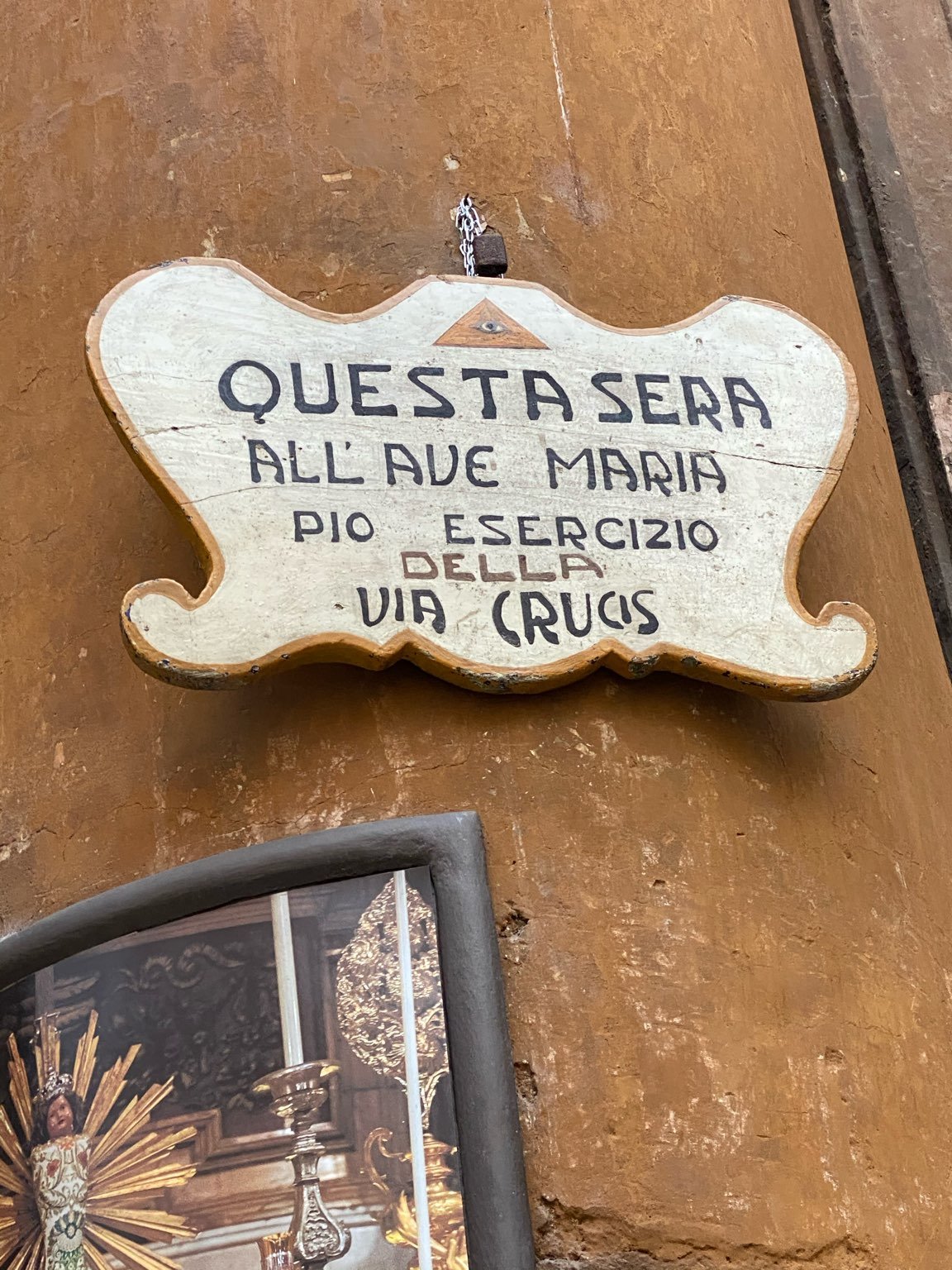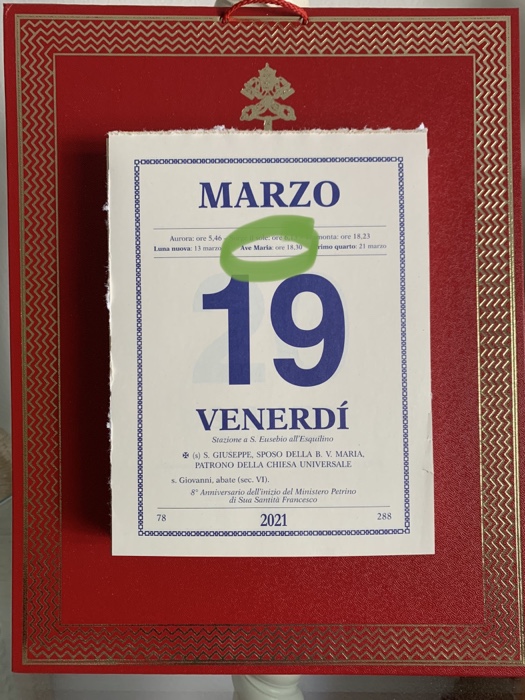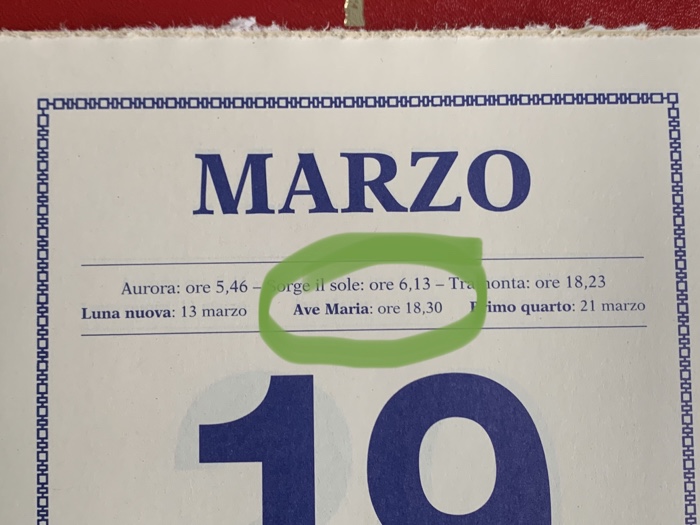Today on the Feast of St. Joseph, and a Lenten Friday, I have two Bonus Shots.
First,

Photo by Bree Dail.
And next…

Photo by The Great Roman™.
I cannot tell you how happy I am to see this sign, with the reference to the “Ave Maria”. When I was in Rome, last, I started each daily post with when the “Ave Maria” was for that day. This is not the Angelus. It is a different concept for calculating time outside of our usual rigid hour system. It is hooked into sunset, which changes daily.
First, the “Ave Maria” is still indicated on the calendar of the Roman Curia. Today it is set for 18:30.


The “Ave Maria” indicates the time of the ringing of the Ave Maria Bell, which once upon a time let people know at what point in the day they were when there were not an abundance of clocks.
Think about how, in Rome, even today a canon sounds at noon, booming out over the City. Noon was important, because that’s when appointments and contracts began. Church appointments still begin at noon.
Regarding Noon, solar Noon, there was a great solar clock tracing the analemma on the floor of Santa Maria degli Angeli. When the spotlight from the sun crossed the midday mark on the floor, a signal flag went up from the roof of the church. Spotted from the Gianicolo, a canon sounded the hour. Remember, the hours are unequal because, like an accordian or slinky, they lengthen or shorten depending on the angle of the Sun in the sky as your planet, on its axis, goes around your little yellow star.
The Ave Maria signaled a turning point in the work day in the Curia.
A bell rang, approximately one half hour after Sunset, 3 times, then 4 times, then 5 times, and then once. That indicated the change of the religious day from day to night.
Approximately, because the sunset changes but the Ave Maria stays fixed for a while, then changes in 15 minute increments. Hence, since right now the Ave Maria is rung at 18:30, as it is from for some days, then 17:30 is 23rd hour of the day and 19:30 is the 1st hour of the next day.
In the Roman Curia, Cardinals and other officials would still receive people in audience for the hour after the Ave Maria Bell rang. An hour after the Ave Maria, a single bell would toll, thus ending all business for the day, since it was the first hour of … night.
At St. Peter’s the different bells sent different messages. Remember that bells are “baptized” at their consecration, because the have names, and move and “speak”. So, the big bell, the “Campanone” would ring by itself at the death of the Pope. Others: the “Campanoncino”, the “Campana della Rota” (rang for meetings of the Rota), la “Campana della Predica” (which rang when the sermon started) e la “Campana dell’Ave Maria” (which I explained) , and the little ”Campanella”.


































How beautiful that is. I can’t imagine why the people of Italy would allow such a wonderful culture to be taken from them. I guess we’ve all learned but learn too late, if you want to keep your culture, you have to defend it and not allow those who hate it to have the slightest inroads, or they will just destroy it.
Beautiful image of the elevation, so appropriate for this day. I don’t think I’ve ever seen a picture of St. Joseph crowned. So glad to have seen it on this day when I managed, for the first time, to complete the consecration to him.
Beautiful pictures. That is fascinating about the Ave Maria bell and the other bells and cannons (does the cannon have to be fired by a canon or can anyone do it? :)
How much powder should we put in the canon before setting it off?
–
Is it a bishop talking about his canon reminiscent of the coach answering reporter questions after a bad loss?
“Coach, what do you think of your defense’s execution?”
“I’m in favor of it.”
Pingback: CATHOLIC HEADLINES 3.21.21 – The Stumbling Block